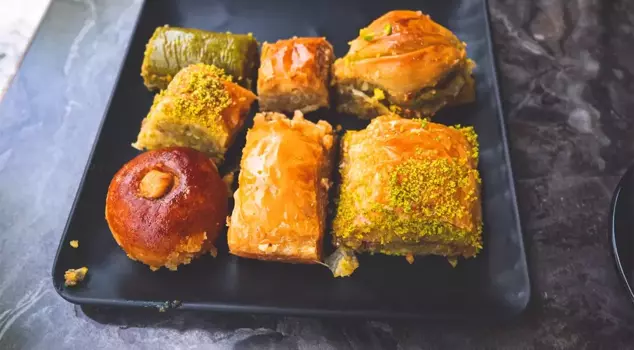
27.03.2025 10:54
Baklava is one of the most important desserts in Turkish cuisine. Especially during holidays, baklava is a must-have, but recently, with the rise in prices of hazelnuts, walnuts, and pistachios, counterfeiting has also increased. Mehmet Yıldırım, the President of the Baklava and Dessert Producers Association (BAKTAD), highlighted the counterfeiting practices in baklava and explained the key points to distinguish fake baklava.
```html
The indispensable dessert of Turkish cuisine, baklava, has become one of the most ordered food products as Ramadan Bayram approaches. As the holiday nears, demand increases, and the President of the Baklava and Dessert Producers Association (BAKTAD), Mehmet Yıldırım, warned against fake baklavas.
HERE IS THE EASIEST WAY TO RECOGNIZE FAKE BAKLAVA
Yıldırım explained the difference between fake and real baklava, stating that especially baklavas priced below 400-500 TL may be of poor quality, and he detailed the tricks used in baklava production. Yıldırım emphasized that the biggest difference between fake baklava and real baklava is in the color of the baklava and the amount of syrup used.
Listing the distinct features of good baklava, Yıldırım said that real baklava should have a golden yellow color, and it should look shiny and vibrant. "The golden yellow color is the most important indicator of real baklava. If the baklava is dull or dark in color, it may indicate that the ingredients used are of poor quality," he said. He also pointed out that the syrup of real baklava should not be excessive, stating, "Baklava should not be overly syrupy. Less syrup indicates that the baklava is of high quality and made correctly. Excessive syrup may indicate that the baklava was produced with unhealthy ingredients and in unhygienic conditions," he added.
"FAKE BAKLAVA IS EXCESSIVELY SWEET"
Explaining the characteristics of fake baklava, Yıldırım noted that fake baklava is usually very syrupy and stands out with its color. "Fake baklava is generally excessively sweet and overly syrupy. Additionally, the color of the baklava may be dark or dull. This means that the butter used is of poor quality or that low-quality ingredients have been preferred," he warned consumers against such products. There are a few more important points to consider when buying baklava. Yıldırım stated that attention should be paid to the appearance of the baklava. "Good baklava should not have excessive syrup dripping, should be shiny with a golden yellow color, and should have fluffy layers. Moreover, the aroma of the baklava is also an important indicator. The scent of butter and pistachios should be noticeable," he said.
"BAKLAVAS PRICED BELOW 400-500 TL ARE OF POOR QUALITY"
Yıldırım mentioned that prices are another factor that indicates the quality of baklava, stating in an interview with Sputnik Türkiye, "Real baklava is made with effort and quality ingredients, so its price is naturally high. Baklavas sold for less than 400-500 TL are generally industrially produced and may be unhealthy and of low quality." Understanding the difference between fake and real baklava can sometimes be difficult for consumers. However, by paying attention to indicators such as golden yellow color, less syrup, and even layers, it is possible to distinguish quality baklava. Those who want to consume a healthy and delicious dessert during the holiday are advised to choose baklava based on these features.
```